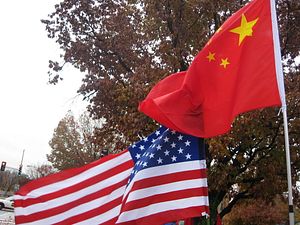There is an enormous amount of misinformation about the Chinese digital currency these days. For example, Kyle Bass of Hayman Capital Management recently stated about China’s sovereign digital currency that “the digital yuan is the largest threat to the West that we’ve faced in the last 30, 40 years. It allows China to get their claws into everyone in the West and allows them to export their digital authoritarianism.” This fearmongering does not help to clarify the complex issues between the United States and China, in which there are real points of contention.
Some points of clarification:
First, China is not trying to get its claws into Westerners. For one thing, there are many Chinese Americans, of which I am one; thus, the perceived stark division between people in China and “the West” is not reality. More importantly, China and the U.S. had a productive relationship for several decades before animosity became pervasive in recent years. While certainly there have been serious issues that required more adept handling, particularly the issue of forced technology transfer, the relationship between the two countries was mutually beneficial and self-reinforcing. Many multinational firms continue to produce in China because it is a win-win connection. The implication in the statement above is that China wants to “use” or “destroy” the West, whereas this has not been borne out in reality.
Second, China is not exporting “digital authoritarianism.” Perhaps this phrase implies a means of surveilling the populace. It is true that the digital currency will allow the Chinese government to track which digital wallets are holding the currency. The main goal of this is to reduce the incidence of money laundering. China has struggled with this phenomenon, which takes place in cash through underground banks and other channels. The digital currency will replace part, not all, of the cash reserves and will therefore reduce but not eliminate the incidence of money laundering. The digital currency cannot be used for accounts that accrue interest, and will not replace most fund accounts.
Third, the issue of cross-border banking has not been entirely fleshed out. It is not clear whether or to what extent Westerners can use the digital currency if they do not have a digital wallet associated with the major Chinese banks and fintech firms that have the ability to issue digital currency. It is more likely that the Chinese digital currency will have to be exchanged across borders, which means that the Chinese government is unlikely to track the currency throughout the globe.
There are real issues that the United States and China need to work out. It would be more productive to focus our anxieties and intellects on these. First, the U.S. and China are engaging in cyberconflict – i.e. hacking – on a regular basis. Dialogue at the highest levels, as well as greatly improved defensive systems, can help to address this issue. The U.S., in particular, is not well protected against potential hacking attempts, as we have seen with a rise in attacks on U.S. firms, including Microsoft and IT firm Kaseya, U.S. water utilities, and U.S. energy utilities, such as the Colonial Pipeline fuel system.
Second, the technology issue is major. The United States has placed many Chinese companies that have any affiliation with the military on an entity list. While this may be a functional short-term solution, a longer-term solution needs to be implemented. Beyond building better technological capabilities and working with allies, the U.S. should develop better data privacy regulations and work with the technology business community to understand how to maintain American firms’ profitability while ensuring national security and IP protection. Engagement with China on this topic is also critical.
Third, there is the China-U.S. trade war to consider. The United States needs to determine whether it will continue tariffs, enforce the Phase One agreement, and/or engage in further discussions with China. American firms continue to pay the high cost of tariffs, with no end in sight. Although it appears the Biden administration is holding on to the tariffs to use as a potential bargaining chip with China, the administration is not moving quickly enough to show that it is serious about resolving the economic conflict.
These are a few of the top issues between the U.S. and China, proving that there is little need to invent tensions, such as with the Chinese digital currency. It is sensational but irresponsible to vilify China in every direction. This language has also given rise to anti-Asian sentiment in the U.S. and racial hatred, which I have myself experienced. Therefore, we would all be better off discussing material issues with an aim to resolving them.

































